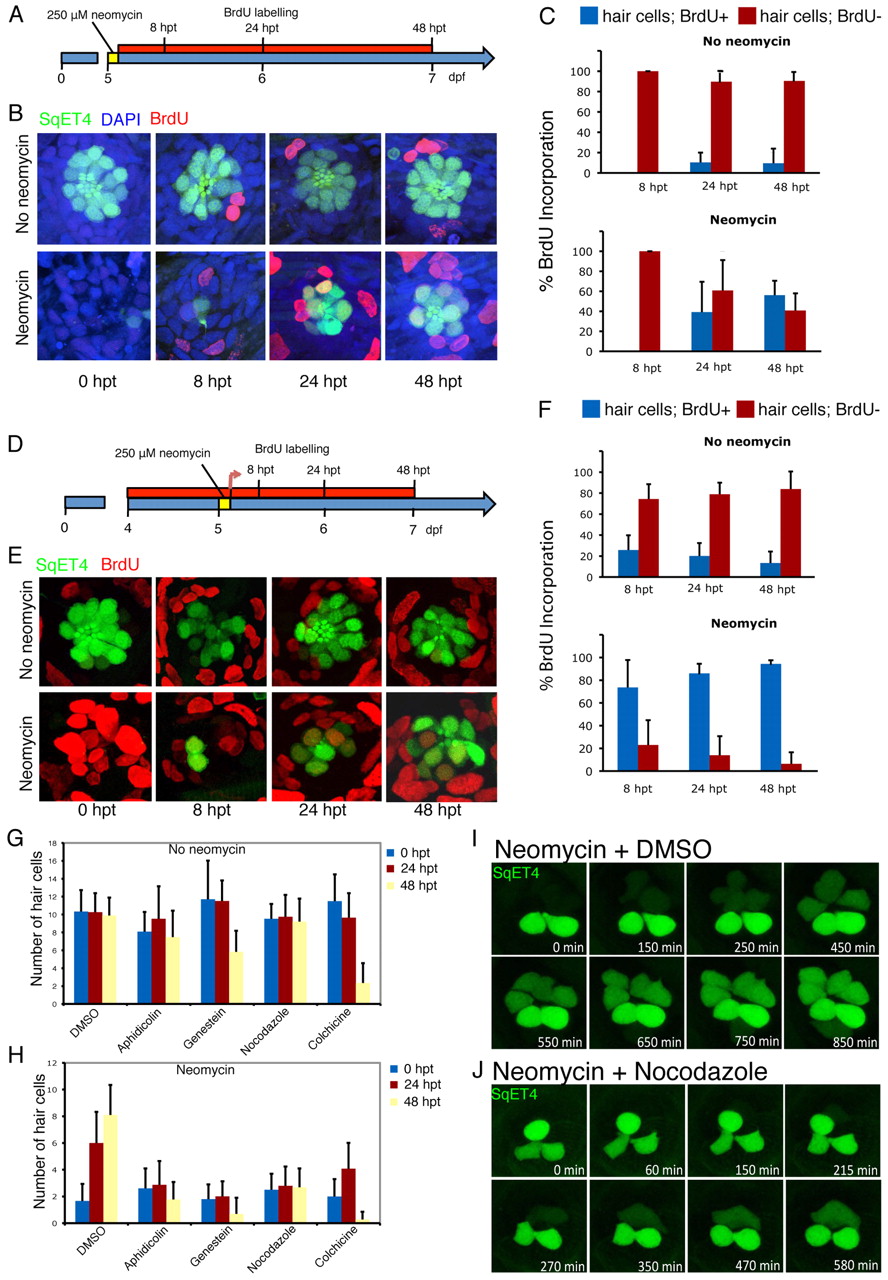Fig. 2 Mitotic activity is essential for hair-cell regeneration neuromasts. (A) Scheme representing the experiments in which hair cells were ablated with neomycin in SqET4 transgenic zebrafish larvae at 5 dpf, and subsequently incubated continuously in BrdU for 8, 24 and 48 hours after neomycin treatment (8,24 and 48 hpt). (B) Confocal images of neuromasts showing hair cells in green and BrdU in red. All cell nuclei were labeled with DAPI (blue). (C) The mean number of GFP(+) hair cells that were BrdU(+) versus BrdU(-) in control and treated larvae at 8, 24 and 48 hpt (n=70 neuromasts for each timepoint). In control samples not treated with neomycin, few hair cells were labeled with BrdU at 48 hpt, whereas 59% of regenerated hair cells were BrdU(+) in neomycin-treated fish at 48 hpt. Error bars indicate s.e.m. (D) The experiments in which SqET4 transgenic zebrafish at 4 dpf were incubated continuously in BrdU, treated with neomycin to ablate hair cells at 5 dpf and subsequently incubated continuously in BrdU for 8, 24 and 48 hpt (results are shown in E,F). (E) Confocal images of neuromasts showing hair cells in green and BrdU in red. (F) In control samples not treated with neomycin, 74% of regenerated hair cells at 8 hpt are BrdU positive (n=70), compared with only 26% BrdU-positive hair cells in untreated larvae (n=70). By 48 hpt, 94% of regenerated hair cells are BrdU(+), compared with only 13% in untreated specimens. This finding indicates that virtually all regenerated hair cells develop from progenitors that have undergone cell division following neomycin-induced hair-cell ablation and that progenitors enter the cell cycle less than 8 hours after hair-cell death. Results are mean;;plusmn;s.e.m. (G,H) SqET4 transgenic larvae were incubated in several inhibitors of the cell cycle for 24 and 48 hours following neomycin treatment. The quantification shows that the number of hair cells remains relatively constant following treatments with the cell-cycle blockers aphidicolin, genistein and nocodazole in control samples (not treated with neomycin). All cell-cycle inhibitors blocked hair-cell regeneration in samples treated with neomycin. Results are mean±s.e.m. (I,J) These results were confirmed by time-lapse videomicroscopy in regenerating SqET4 control (I) and nocodazole-treated (J) larvae. Controls regenerated normally, whereas nocodazole blocked regeneration and the division of a UHCP that appears at the top of the neuromast in J.
Image
Figure Caption
Acknowledgments
This image is the copyrighted work of the attributed author or publisher, and
ZFIN has permission only to display this image to its users.
Additional permissions should be obtained from the applicable author or publisher of the image.
Full text @ Development

